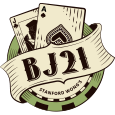More on Hedging

King Yao is the author of Weighing the Odds in Hold‘em Poker, and Weighing the Odds in Sports Betting. He uses his experience from making millions in financial derivative markets and translates it into gambling. Since he left his trading position in 2000, he has been playing poker and betting on sports. He travels to Las Vegas frequently, especially during football season.
Prospective sports bettors must know the basic principles of sports betting. You should not be betting online or anywhere else without this fundamental knowledge.
Hedging the Last Leg of a Parlay
This mistake is not necessarily in the hedge, but in the original parlay. Some bettors like to hedge the last leg of a parlay if they are lucky to have won all the first legs. Before the last leg of the parlay, they realize they can lock in a profit and they cannot resist.
Instead of paying the vigorish (“vig”) to bet against the last team of the parlay, you should simply play a parlay with fewer teams. For example, instead of playing a 5-team parlay where you know you are going to hedge if you win the first four games, you should simply play a 4-team parlay instead.
The exception to this is if the sportsbook is offering better relative odds for choosing more teams in a parlay. In that case, you may have decided ahead of time to hedge and calculated the cost of the hedge into the parlay. That is an exception though and is not usually the case.
This mistake is made when players have the lottery mentality. They want to hit it big and get a lot of bang for their buck. These players will tend to play parlays with many teams so they can win big if they get really lucky. However if they do get lucky and have just one or two teams to go to win the parlay, often they get nervous with their newfound risk of losing the parlay now that it has tremendous value. Hedging is not necessarily a mistake if they feel the risk is too high and cannot stomach losing. The mistake was putting themselves in that position in the first place by playing too many teams in the parlay.
Hedging the Second Half
Some bettors will look to hedge their full-game bets at halftime if they can get into a middle situation. Usually the second-half bet is a negative-EV bet if the sportsbook is doing its job profitably. And usually you have no valid reason to hedge. Of course, if the second-half bet is a positive or zero EV bet, then it is a good idea to hedge. Here is an example of a second-half hedge bet that is a mistake.
You took the Giants +3.5 versus the Eagles. At halftime the Giants are up 14-0. The second-half line is the Eagles -4. Many will bet the Eagles -4 in the second half as a hedge against their bets on the game. The thought process is to create a big middle.
You will win both bets (or tie one side and win the other) if the Giants win by 1 through 10 points or if the Eagles win by 1 through 3 points. This big middle is enticing. However, you already have a high chance of winning the initial wager. The benefit of the big middle did not come about from the second-half bet, but rather from the increased EV of the initial wager based on the points scored in the first half.
In football and basketball, second-half bets are popular. You can sometimes take advantage of the expectation of which side other players will bet in the second-half. To do it requires that you understand which team the money was bet on before the game, line movement, the type of bettors who moved the line, the type of customers who frequent that sportsbook, and the risk profile of the sportsbook. There is a small window of time when the second-half bet is available; that can mean more diversity of lines between sportsbooks than you typically see for game lines. There is considerable movement of lines for second-half bets due to a high volume of bets in a short time period.
If you know other bettors will hedge their bets and play a specific side in the second half, you may be able to use that information by betting that side when the second-half line is first posted and get the opening number before the sportsbook starts to move the lines due to action. After the line moves due to the flood of other bettors betting that side, you can come in and bet the other side to create a nice scalp or middle opportunity. Depending on the situation, a better alternative may be to just make that second bet after the line moves.
This is part of an occasional series of articles.
Excerpted with permission from the e-book version of Weighing the Odds in Sports Betting by King Yao, edited for this format.












Please log in or register to leave a comment